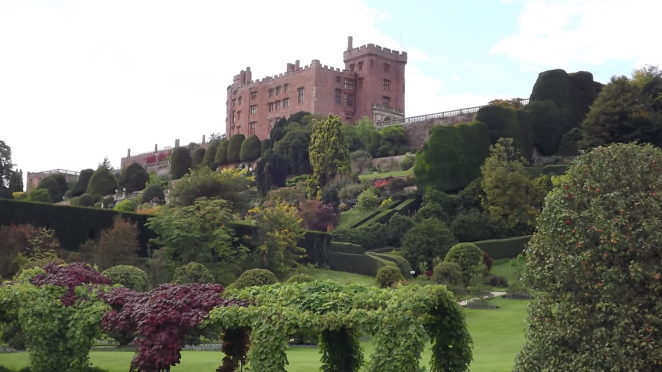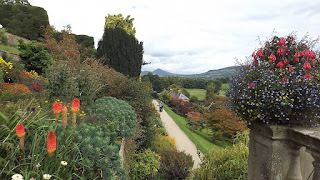
A visit to Powis Castle near Welshpool,
east Wales, would not be complete without spending some time in the castle
gardens. Apart from the gardens themselves, there are splendid views to be had
of the surrounding countryside.
Powis Castle is set on a rocky prominence
above the valley in which Welshpool sits, which means that the slope below the
castle would be far too steep to plant a garden unless the land was terraced,
and that is precisely what has been done. Four broad terraces lead down from
the castle to the valley floor, where the gardens continue.
The terracing was started in the early 17th
century, but the real work was done in the 1680s by the architect William
Winde, who was also a military engineer who knew how to blast the solid rock
away to create level surfaces.
The Herbert family, who owned Powis Castle,
were supporters of the Catholic King James II, so when the latter was deposed
and exiled in 1688, the Herberts went too. They were greatly impressed by what
they saw of the gardens of French aristocrats and royalty, so, on their return
in 1703, they set about creating a garden that incorporated features that they
had seen in France and on their travels around continental Europe.
The gardens seen today owe much to the efforts
of a more recent family member, namely Violet Lane-Fox (1865-1929), the wife of
the 4th Earl of Powis who left the castle and its grounds to the
nation on his death in 1952. The countess sought to restore the gardens to
their former splendour after many years of neglect, just as her husband did for
the castle.
The four terraces contain a profusion of
flowering and foliage plants backed by stone and brick walls and framed by low
box hedges. Classical statues of nymphs and swains add a continental touch.
The massive yew hedges on the upper
terraces and particularly at the northern end are notable features of the Powis
Castle gardens. These hedges were originally trimmed into intricate shapes but
are now “cloud pruned” into bulky shapes that are no less impressive. A photo
on display in the garden shows how the hedges were pruned in former times, with
gardeners climbing up 40-foot ladders and standing on top on the hedges armed
with shears, but in these more health-and-safety-conscious times the job is done
from a mechanical cherry-picker!
Below the terraces is a mixture of garden types,
including a formal garden in the 18th century style, a croquet lawn,
and the Grand Lawn that was originally a water garden. One area has been
allowed to run wild (although it is full of daffodils in the spring) in order
to encourage wildlife. There is a large area of woodland with paths running
through it, and a small lake that is also designed as a wildlife haven.
It would be very easy to spend a long time
in the garden, but the visitor needs to remember that the gate is locked at
5.30pm (earlier out of the summer months) and it takes longer to walk up four
terraces to the exit than down!
© John Welford




No comments:
Post a Comment